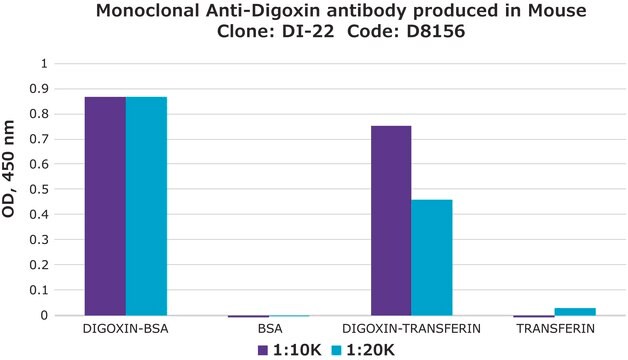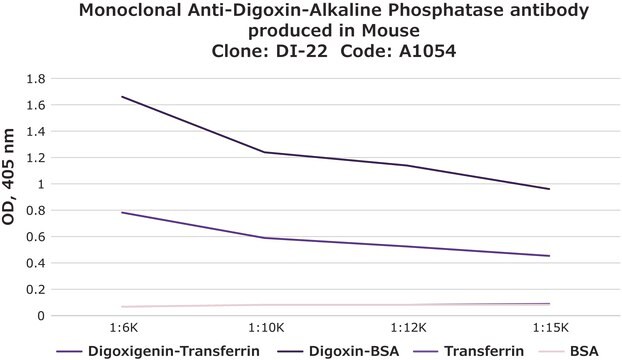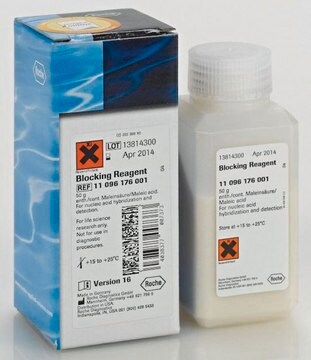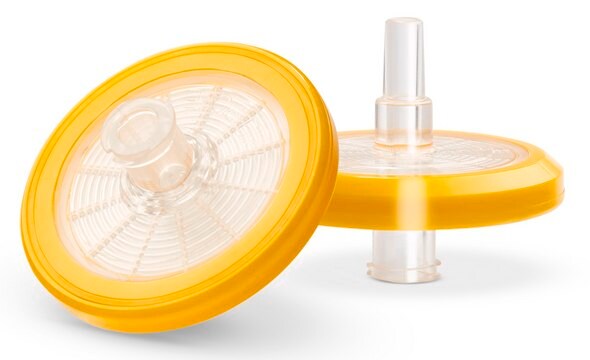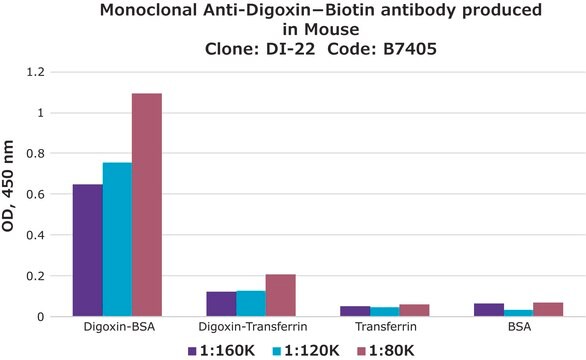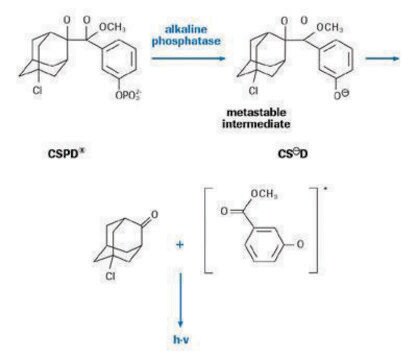11214667001
Roche
Anti-Digoxigenin, Fab fragments
from sheep
Sinônimo(s):
anti-digoxigenin, digoxigenin
About This Item
Produtos recomendados
fonte biológica
sheep
Nível de qualidade
conjugado
unconjugated
forma do anticorpo
affinity purified immunoglobulin
tipo de produto de anticorpo
primary antibodies
clone
polyclonal
Formulário
lyophilized
embalagem
pkg of 1 mg
fabricante/nome comercial
Roche
técnica(s)
ELISA: 2-4 μg/mL
immunohistochemistry: 0.5-1 μg/mL
western blot: 0.5-2 μg/mL
Isotipo
IgG1
temperatura de armazenamento
2-8°C
Descrição geral
Especificidade
Aplicação
Use Anti-Digoxigenin, Fab fragments for the detection of digoxigenin-labeled compounds using:
- ELISA
- Immunohistocytochemistry
- In situ hybridization
- Western blot
- Flow cell construction.
Características e benefícios
Sequência
Nota de preparo
- ELISA: 2 to 4 μg/ml
- Immunohistocytochemistry: 0.5 to 1 μg/ml
- In situ hybridization: 0.2 to 0.4 μg/ml
- Western blot: 0.5 to 2 μg/ml
Storage conditions (working solution): Diluted antibody is stable at 2 to 8 °C for 12 hours.
Always prepare freshly!
Reconstituição
Nota de análise
Outras notas
Não está encontrando o produto certo?
Experimente o nosso Ferramenta de seleção de produtos.
Código de classe de armazenamento
11 - Combustible Solids
Classe de risco de água (WGK)
WGK 1
Ponto de fulgor (°F)
does not flash
Ponto de fulgor (°C)
does not flash
Escolha uma das versões mais recentes:
Já possui este produto?
Encontre a documentação dos produtos que você adquiriu recentemente na biblioteca de documentos.
Os clientes também visualizaram
Artigos
Digoxigenin (DIG) labeling methods and kits for DNA and RNA DIG probes, random primed DNA labeling, nick translation labeling, 5’ and 3’ oligonucleotide end-labeling.
Nossa equipe de cientistas tem experiência em todas as áreas de pesquisa, incluindo Life Sciences, ciência de materiais, síntese química, cromatografia, química analítica e muitas outras.
Entre em contato com a assistência técnica

